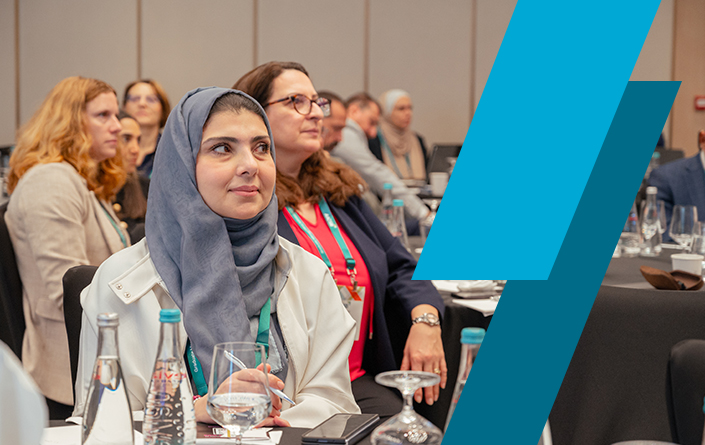Doing Executive Education Well in Rural Markets
- Growing an executive education program is especially challenging for business schools operating in rural areas, where they have access to smaller population bases and fewer Fortune 500 companies.
- The University of Iowa’s Tippie College of Business reinvigorated its own program by using executive education as the means to make faculty research accessible and impactful to stakeholders.
- Through a four-part approach that leverages its faculty’s specific expertise, the college has significantly increased enrollments in its nondegree programs.
Delivering nondegree executive education is an important way for business schools to diversify revenues, support corporate partners, and offer lifelong learning opportunities. However, schools outside major metropolitan areas face unique challenges in offering competitive executive education programs.
We can see one indication of these challenges when we look at the Consortium for University-Based Executive Education, or UNICON. Nearly all 50 U.S.-based AACSB-member business schools that belong to UNICON are in or near major metro areas. In contrast, 73 percent of all U.S.-based AACSB institutions are located outside large population centers. Does this mean that success in executive education is out of reach for nearly three-quarters of AACSB-member schools?
At the University of Iowa’s Tippie College of Business in Iowa City, we have demonstrated that the answer to this question is no. When we recently reinvigorated our executive education efforts, we showed that it is possible for such programs to thrive at a school based in a small metro area in a rural state. Our initiative has created an additional stream of revenue that has allowed the college to launch new student programs and that has provided additional support for faculty research. We also have increased the footprint of our executive education programs, both locally and globally, to nearly 11,000 nondegree program enrollments in four years.
However, our geographical constraints required us to reimagine traditional executive education as a town-and-gown form of public scholarship. This vision informs how we create and deliver value to individuals and organizations. We believe our approach provides a compelling roadmap for business schools, whether they are building programs in less populated geographic locations or planning to enter much larger executive education markets.
Redefining Executive Education as Public Scholarship
The Tippie College of Business has a presence in Iowa’s three largest metro areas. Iowa City/Cedar Rapids, where Tippie is located, has a population of around 275,000; its market size ranks as No. 182 in the U.S. We also serve the Quad Cities, which includes Davenport and Bettendorf in southeastern Iowa, and Rock Island and Moline in northwestern Illinois; this region has a population of 385,000 and ranks No. 147. The state’s largest metro area, Des Moines, has a population of just under 700,000 and ranks No. 81.
To put it into perspective, the combined population of Iowa’s three largest metro areas is smaller than each of the following metro areas in our neighboring states: Milwaukee (1.5 million), Kansas City (2.2 million), St. Louis (2.8 million), Minneapolis/St. Paul (3.6 million), and Chicago (9.2 million). With a population of just 3.2 million, the entire state of Iowa is home to just two Fortune 500 companies, compared to 38 in Illinois, 10 in Missouri, and 18 in Minnesota.
The category in which the state ranks at No. 1 in the country? The most acres of cropland.
We view executive education as the means for faculty to disseminate their research in customizable and actionable ways, similar to the function of extension offices in other professional schools.
However, Iowa has one thing in common with schools in every other market, large or small: Its lawmakers are increasingly skeptical about the value of faculty research and public higher education in general. This makes strong town-and-gown relations vital. That’s why our executive education efforts are unapologetically driven more by impact than by revenues alone. In a rural state overwhelmingly powered by small business, we want to ensure that our research reaches not only executives in large corporations, but also entrepreneurs, the owners of small businesses, and the leaders of nonprofit and community organizations. We want to make a real impact in our region and beyond.
Given these realities, we developed our “Tippie Without Walls” approach to executive education. This public scholarship model is grounded in the assumption that public business schools have a moral imperative to make faculty research accessible and impactful for stakeholders.
With that in mind, we view executive education as the means for faculty to disseminate their research in customizable and actionable ways, similar to the function of extension offices in other professional schools. Our content and delivery are based on evidence and application rather than on anecdotes and “edutainment.”
An example of our public scholarship model is a signature in-person executive leadership program that we co-created with our local chamber of commerce. This group had long provided leadership development programs for younger and mid-career professionals in the area, but there was a gap in such opportunities for executives and owners of small businesses and nonprofits. Rather than insert ourselves as a competitor, we partnered with the chamber to learn about the concerns of the local business community and determine how we could address those concerns with our faculty’s research.
The resulting program focuses on strategic issues related to hiring and retaining talent; diversity, equity, and inclusion (DEI) practices; change management; and employee well-being. We are now establishing similar community partnerships in other areas of our state because they align with our public scholarship model. Just as important, given the existing connections and credibility that these partners have in their communities, we ask them to assume the responsibility for recruiting and enrolling program participants in their areas—easily the most expensive and risky parts of running open enrollment programs.
With this vision as our inspiration, we integrated the four strategies described below.
1. Specialize Where Faculty Expertise Is Deep
In redesigning our program, we found that our most talented faculty were more motivated to teach in executive education programs when they viewed the activity as directly connected to their research. Admittedly, some audiences might find specific research more actionable than others. For this reason, we intentionally made our group of executive educators small and specialized.
We first set the expectation that faculty in our programs should be tenured professors with outstanding research records, excellent teaching reviews at the MBA level, and an interest in nondegree audiences. Initially, we found that faculty who met these criteria were primarily housed in our management department, with their expertise focused on leadership, teamwork, talent management, and DEI.
Given that this internal expertise is highly valued by our community and business partners, we made a strategic decision at the outset to specialize our executive education content and branding around management and leadership issues. In fact, we even named our center for executive education the Tippie Leadership Collaborative.
In other words, our goal is to deliberately not be “everything to everyone” but, rather, “something to someone.” It might seem that, because of such specialization, we offer a narrower menu of expertise relative to other executive education providers. However, we have found that a focused differentiation strategy allows us to create programs that are more niche and cutting-edge, as well as based more squarely on the needs we see in our market.
Our goal is not to be “everything to everyone” but rather, “something to someone.” A focused differentiation strategy allows us to create programs that are based more squarely on the needs we see in our market.
For example, one of our executive education engagements with a medium-sized company in Iowa was featured on CNBC. The company’s CEO described how she sensed that many of her employees had side hustles. She reached out to us for advice on how to broach this subject with them. A member of our faculty who has done research in this area designed and delivered a short course for the organization on how to make side hustles effective for the individual and the company.
This training helped the company turn otherwise difficult conversations into meaningful, productive exchanges between managers and employees. Other niche topics we have addressed for clients, with similar success, include toxic leadership, burnout, imposter syndrome, and remote teamwork, to name just a few.
2. Reorient Toward Lifelong Learning
Executive education has traditionally targeted more senior-level professionals, often at large multinational companies. This approach works well in large metro areas with a heavy corporate presence, but not necessarily in Iowa. Here, we instead focus on programs that impact individuals at all stages of their careers, including new managers, nonmanagerial staff, and aspiring professionals. This reorientation has essentially turned executive education into lifelong learning.
As an example, we facilitate a nondegree program with our university’s colleges of pharmacy and dentistry called the Healthcare Business Leadership Program (HBL). This initiative provides business training to late-stage students in these colleges. Many of these students plan to practice in rural areas and will be managing small businesses and workforces while simultaneously caring for patients.

A faculty member of the Tippie College of Business delivers an executive education course.
HBL is designed like an in-residence executive education program, involving six days of in-person instruction. The program focuses on topics such as leadership, talent management, decision-making, negotiations, and entrepreneurship, and includes a crash course on finance. Enrollees also can make this program count as three credits toward a graduate certificate in leadership, which they can stack into our flexible Iowa MBA degree.
3. Leverage Existing Connections
Our core faculty have a strong reputation for research productivity, but as mentioned above, we do not have large global corporations knocking on our door for faculty expertise. So, rather than conduct expensive marketing campaigns or hire business developers, we find it more useful to expand and deepen existing connections that our faculty, staff, alumni, and community members have with organizations.
Using this approach, we frequently collaborate with other offices in our own college to encourage word-of-mouth marketing or to profile our program at college events. For example, we recently partnered with our college’s alumni office to launch a five-part webinar series focused on employee well-being. Each webinar featured two faculty members sharing their research in relation to the U.S. Surgeon General’s Model for Workplace Well-Being and included a brief advertisement for the Tippie Leadership Collaborative. These webinars, along with several others, have been watched by thousands of people in real time and have received tens of thousands of views on YouTube. A variety of relationships and new client engagements have come from these viewers.
Another example is a connection we made with a large nationwide healthcare organization, with whom one of our faculty members has done research for over a decade. Based on this relationship, we delivered a two-day in-person executive education program to dozens of the company’s leaders across the country. Soon after, the company asked our faculty to design virtual programming for hundreds of its managers and staff at 24 offices across the country.
4. Offer Multiple Modalities and Formats
Finally, given our remote location, it is not always feasible or cost-effective for our clients to attend multiday in-person programs on campus. Therefore, we frequently leverage virtual capabilities to reach geographically dispersed audiences.
For example, we recently helped a large company in Iowa—for which we already were delivering a leadership academy for high-potential managers—execute an enterprisewide training program on DEI. Facilitated live by one of our faculty experts known for her work in this space, this virtual program reached more than 3,000 employees across the country in two months.
Flexible educational delivery fits our public scholarship model, meets our clients’ needs, and creates opportunities for potential clients to “taste test” our brand.
Similarly, to meet diverse organizational and learner needs, we offer a menu of options for connecting with us, including engagements as short as one hour. As just one example, a couple of years ago we developed a one-hour virtual workshop on the so-called Great Resignation for the Iowa Hospital Association, a nonprofit group that supports education for healthcare managers. Hundreds of people across the state (and invited peers from other states) joined the event and left with new insights on hiring and retaining talent.
This kind of flexibility fits our public scholarship model and meets our clients’ needs. In addition, it creates opportunities for potential clients to “taste test” our brand before investing in us more heavily as a learning and development partner.
Lessons for the Future
As business schools strive for continued relevance, we have been challenged by AACSB to “commit to positive societal impact,” “create new [partnerships] to ensure the business school is solution-driven and relevant to learner and industry needs,” and “strategically invest in technologies that serve diversified learner needs and address educational demands of the future.” At Iowa, we have shown how executive education can play a central role in meeting all three objectives.
In sharing our story, we hope to inspire schools in small metro areas to design robust executive education programs suited for their unique landscapes. That said, we think our public scholarship approach lays out a path to success for any school struggling to refine its nondegree offerings.






